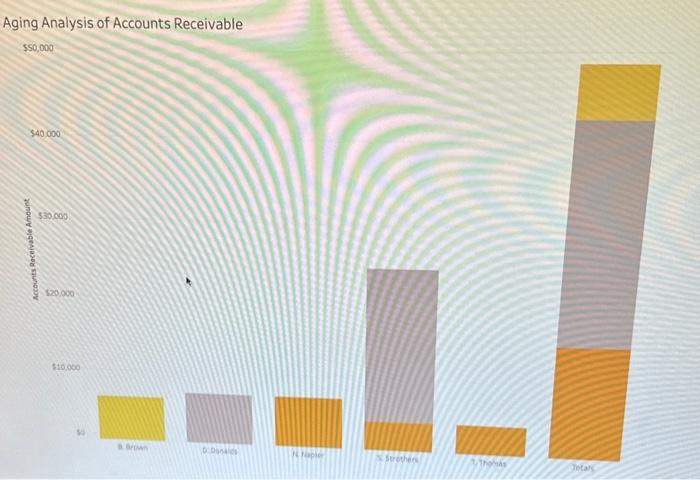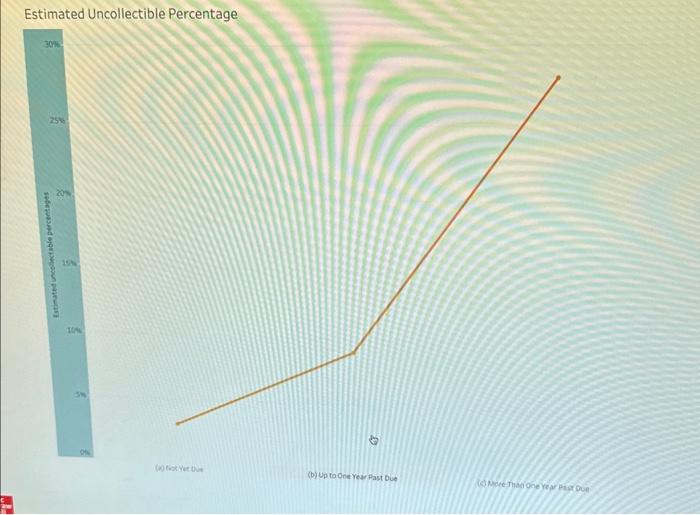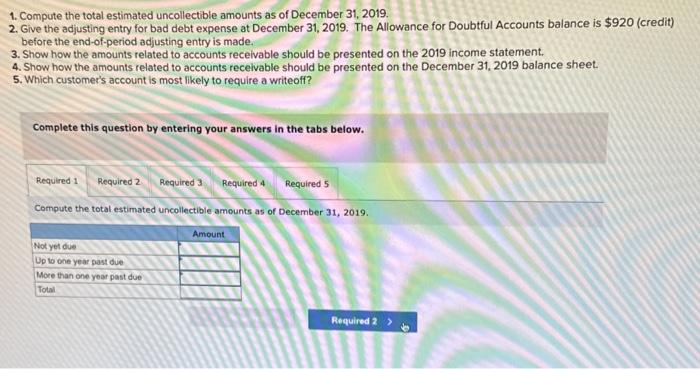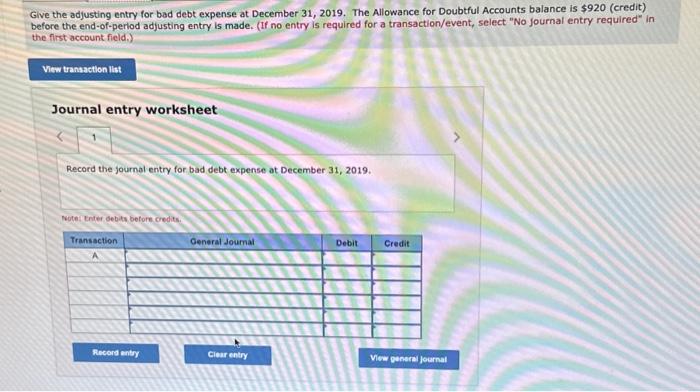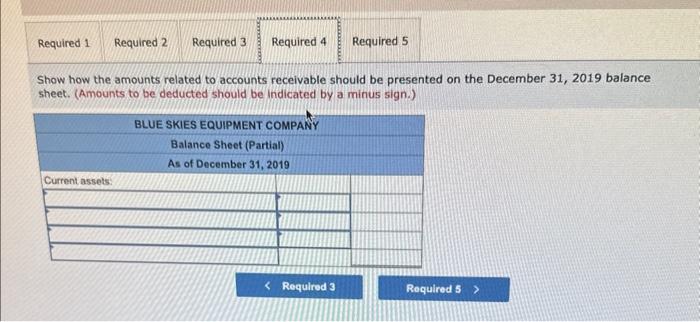Blue Skies Equipment Company uses the aging approach to estimate bad debt expense at the end of each accounting year. Credit sales occur frequently on terms n/60. The balance of each account receivable is aged on the basis of three time periods as follows: (1) not yet due, (2) up to one year past due, and (3) more than one year past due. Only five customers have unpaid balances on December 31, 2019. To do your analysis, you are provided with the following Tableau Dashboard: Aging Analysis of Accounts Receivable Estimated Uncollectible Percentage 1. Compute the total estimated uncollectible amounts as of December 31, 2019. 2. Give the adjusting entry for bad debt expense at December 31, 2019. The Allowance for Doubtful Accounts balance is $920 (credit) before the end-of-period adjusting entry is made. 3. Show how the amounts related to accounts receivable should be presented on the 2019 income statement. 4. Show how the amounts related to accounts recelvable should be presented on the December 31, 2019 balance sheet. 5. Which customer's account is most likely to require a writeoff? Complete this question by entering your answers in the tabs below. Compute the total estimated uncollectible amounts as of December 31, 2019. Give the adjusting entry for bad debt expense at December 31,2019 . The Allowance for Doubtful Accounts balance is $920 (credit) before the end-of-perlod adjusting entry is made. (If no entry is required for a transaction/event, select "No journal entry required" in the first account field.) Journal entry worksheet Record the journal entry for bad debt expense at December 31, 2019. Notel Enter debis before credits. Show how the amounts related to accounts receivable should be presented on the 2019 income statement. Show how the amounts related to accounts receivable should be presented on the December 31,2019 balance sheet. (Amounts to be deducted should be Indicated by a minus sign.) Which customer's account is most likely to require a writeoff? Blue Skies Equipment Company uses the aging approach to estimate bad debt expense at the end of each accounting year. Credit sales occur frequently on terms n/60. The balance of each account receivable is aged on the basis of three time periods as follows: (1) not yet due, (2) up to one year past due, and (3) more than one year past due. Only five customers have unpaid balances on December 31, 2019. To do your analysis, you are provided with the following Tableau Dashboard: Aging Analysis of Accounts Receivable Estimated Uncollectible Percentage 1. Compute the total estimated uncollectible amounts as of December 31, 2019. 2. Give the adjusting entry for bad debt expense at December 31, 2019. The Allowance for Doubtful Accounts balance is $920 (credit) before the end-of-period adjusting entry is made. 3. Show how the amounts related to accounts receivable should be presented on the 2019 income statement. 4. Show how the amounts related to accounts recelvable should be presented on the December 31, 2019 balance sheet. 5. Which customer's account is most likely to require a writeoff? Complete this question by entering your answers in the tabs below. Compute the total estimated uncollectible amounts as of December 31, 2019. Give the adjusting entry for bad debt expense at December 31,2019 . The Allowance for Doubtful Accounts balance is $920 (credit) before the end-of-perlod adjusting entry is made. (If no entry is required for a transaction/event, select "No journal entry required" in the first account field.) Journal entry worksheet Record the journal entry for bad debt expense at December 31, 2019. Notel Enter debis before credits. Show how the amounts related to accounts receivable should be presented on the 2019 income statement. Show how the amounts related to accounts receivable should be presented on the December 31,2019 balance sheet. (Amounts to be deducted should be Indicated by a minus sign.) Which customer's account is most likely to require a writeoff

